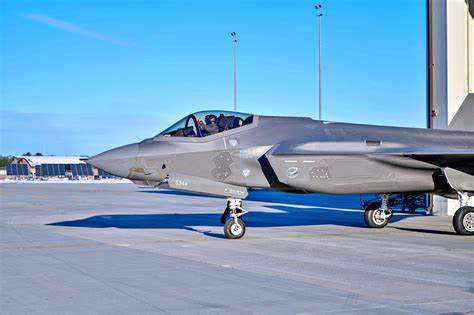
The fifth-generation multirole stealth fighter, called the Joint Strike Fighter (JSF), is notable for its agreements with the United States Air Force, Marine Corps, and Navy, as well as pledges from NATO allies and other international partners.

The F-35 was developed to substitute the Air Force’s A-10, F-16, and potentially F-15, the Navy’s F/A-18, and the Marine Corps’ F/A-18 and AV-8.

supply chain issues and other factors mean the U.S. F-35 fleet did not meet the Department of Defense’s (DoD) 70% “mission capable” rate for 2020 – meaning nearly a third of the fleet was incapable of flying any kind of combat mission.

“Full mission capable” rates, meaning missions against threats requiring the full capabilities of the aircraft, lagged even further behind DoD targets.

With a fleet size of 283 jets delivered to the U.S. Air Force and a total of 655 jets to the U.S. and its partners as of June 2021, the F-35 program represents a substantial investment.

The procurement delays and persistent deficiencies observed during testing have compelled the services to procure additional legacy aircraft, further escalating the program’s costs.

Fort Worth, Texas (Dec. 15, 2006) – The F-35 Joint Strike Fighter Lightning II, built by Lockheed Martin takes off for its first flight to test the aircraft’s initial capability at Joint Reserve Base Fort Worth. The US Defense Department and eight other allied countries have contracted Lockheed Martin as part of the Joint Strike Fighter program, which was designed to maximize efficiency and minimize the life cycle, costs of a future multi-role fighter jet. U.S. Navy photo by Mass Communication Specialist 2nd Class D. Keith Simmons (RELEASED)
Safety concerns also shadow the F-35. Ejection seat tests conducted in 2015 revealed alarmingly high probabilities of death or injury for certain pilot weight classes.

Despite design modifications, an internal Air Force report from 2017 disclosed that unresolved flaws could potentially lead to pilot fatalities over the program’s lifetime.

The aircraft has not been immune to structural and software issues, limiting its performance in certain conditions.

Specifically, the F-35A’s machine gun accuracy and problems with the Autonomic Logistics Information System (ALIS) have been points of contention.

The DoD scrapped it in 2020 for a new cloud-based system called Operational Data Integrated Network (ODIN).

ODIN’s development ran into similar problems and has since stalled after funding for it was cut in the DoD’s FY21 budget.

The cost per unit ranges from $110.3 million for the F-35A to $135.8 million for the F-35B, excluding nearly $1.3 trillion in estimated life cycle costs over 66 years.

These figures underscore the F-35 as the most expensive weapons system in U.S. history.

A 2021 Government Accountability Office report said there is a widening gap between projected life cycle costs for the F-35 and what the services say they can afford.
Relevant articles:
– 35 Joint Strike Fighter: Costs and Challenges, Center for Arms Control and Non-Proliferation
– The F-35: Analysis of Cost, Performance, and Efficacy, flyajetfighter.com
– F-35 Joint Strike Fighter: More Actions Needed to Explain Cost Growth and Support Engine Modernization Decision, Government Accountability Office (GAO) (.gov), Dec 12, 2023

